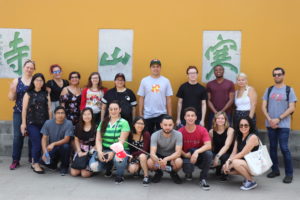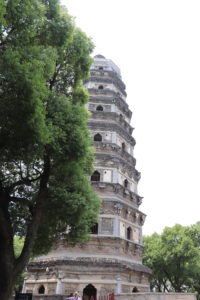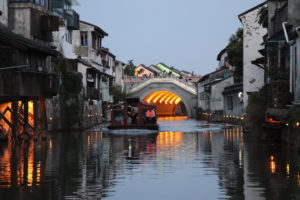Today, we visited the Hanshan Temple in Suzhou, a Buddhist temple that locals and foreigners visit to pay their respects and make wishes. This is done by lighting incense, bowing in the three directions of each Buddhist temple, and placing the incense in a large box. People also gather to bow and pray to the large Buddha statues throughout the temple, as well as throw coins into a large tower in the courtyard as an offering. Experiencing a Buddha temple was humbling and fully immersive into a part of ancient Chinese culture that continues to thrive today.


After visiting the temple, we moved on to visit the temple of the first king of the Wu Kingdom: Tiger Hill. This experience was coupled with urban legend which made walking up the hills to the main tower that much more entertaining. Hearing the legend about how the emperor, his soldiers, and weapons were buried among the hill made it exciting. Our tour guide spoke about how the son of the emperor was worried the laborers who buried the emperor would come back and steal the weapons and treasures that were buried with him. The son decided to throw a huge party for them that ended with their murder. Seeing the courtyard and the huge rock where legend has it that the laborers’ blood was spilled was interesting as well. These cultural experiences were definitely worth bearing the heat and humidity.






